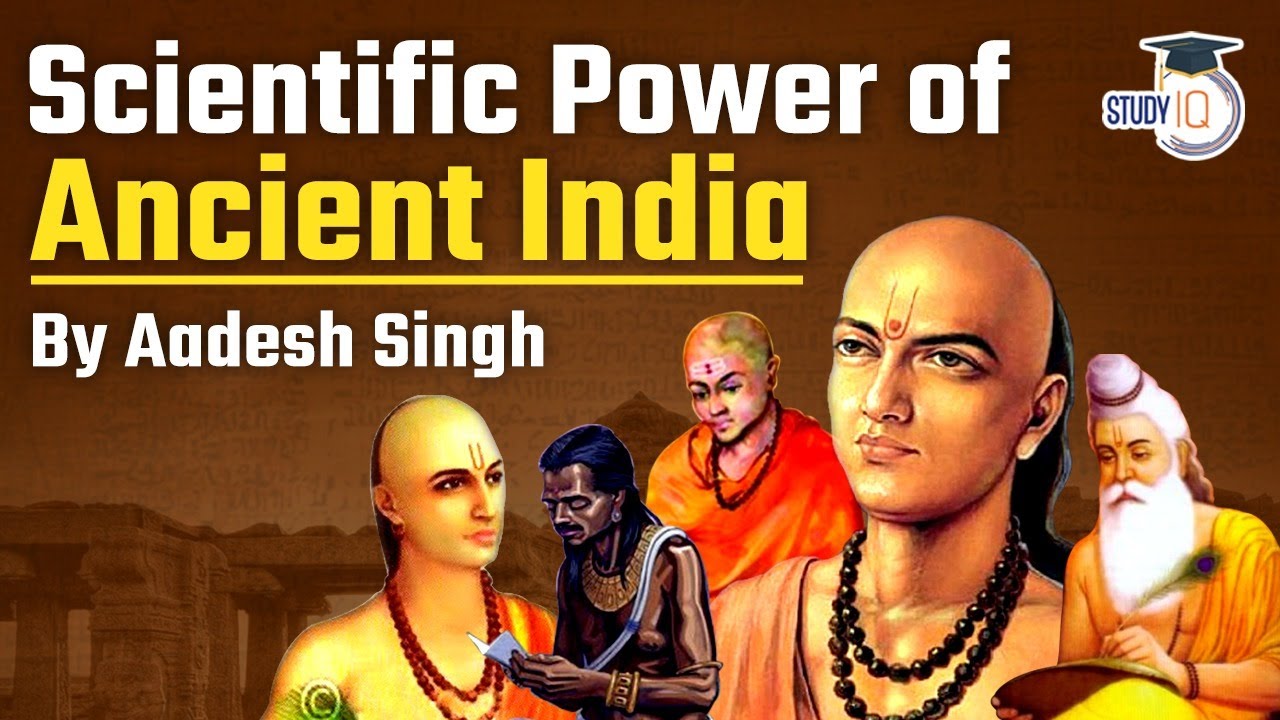Unit-3 Mathematics in Ancient India
Summary
TLDRThis lecture delves into the rich history of Indian mathematics, exploring contributions that have shaped modern mathematics. Highlighting key figures such as Arya Bhata, Brahmagupta, and Bhaskara II, the session discusses seminal advancements, including the concept of zero, the decimal system, and approximations of pi. The influence of Indian mathematics on global understanding is emphasized, detailing how these ideas spread to the Islamic world and Europe. Additionally, Vic mathematics, based on ancient scriptures, is briefly touched upon for its educational impact and debate. This overview celebrates the profound legacy of Indian mathematical thought and its continued relevance today.
Takeaways
- 😀 India's mathematical contributions have a long history, dating back over 5,000 years, with significant influence on civilizations like China, Southeast Asia, and Europe.
- 😀 The concept of zero, introduced by Indian mathematicians, is one of the most fundamental contributions to modern mathematics.
- 😀 Brahmagupta's work in the 7th century defined zero as a number and laid down the rules for arithmetic operations involving it.
- 😀 Aryabhata, in the 5th century CE, was one of the first to approximate the value of Pi as 3.1416, significantly improving its accuracy.
- 😀 The Indian decimal place value system, which includes zero as a placeholder, revolutionized arithmetic and made complex calculations manageable.
- 😀 The concept of Pi was further developed in India through methods involving polygons and geometric approximations by mathematicians like Madhava of Sangamagrama.
- 😀 The Indian numeral system, including the decimal system with zero, has had a profound and lasting global impact on mathematics and numerical notation.
- 😀 Vedic mathematics, though controversial, claims to be based on ancient Indian scriptures and emphasizes mental calculation and efficient computation techniques.
- 😀 Aryabhata is considered one of the most influential Indian mathematicians, contributing to trigonometry, astronomy, and the heliocentric model of the solar system.
- 😀 Brahmagupta's contributions in algebra, including the systematic study of integers and rational numbers, played a key role in the development of mathematical concepts.
- 😀 Indian mathematicians such as Bhaskara II made significant advancements in algebra, geometry, and planetary motion, influencing both Indian and global mathematical traditions.
Q & A
What is the significance of Indian mathematics in global history?
-Indian mathematics has a rich and long history, dating back over 5,000 years. It significantly influenced mathematics in regions such as China, Southeast Asia, the Middle East, and Europe. Indian mathematicians introduced foundational concepts like zero, the decimal place value system, algebra, trigonometry, and calculus, shaping modern mathematical thought.
How did the concept of zero evolve in India?
-The concept of zero was initially used as a placeholder in India's decimal numeral system. Brahmagupta, around 598-668 CE, defined zero as a number with its own value and discussed its mathematical properties. Aryabhata also used symbols to represent zero, recognizing its importance in calculations.
What was the role of Brahmagupta in the development of zero?
-Brahmagupta is credited with significantly advancing the concept of zero. He defined zero as a number and introduced rules for arithmetic operations involving zero, such as addition and subtraction, which are now fundamental in mathematics.
What is the connection between the Indian decimal numeral system and global mathematics?
-The Indian decimal numeral system, developed around 2,500 to 1,500 BCE, revolutionized mathematics by using the concept of zero as a placeholder. This system was transmitted through the Islamic world to Europe, eventually becoming the standard system used worldwide for numerical notation.
How did Aryabhata contribute to the understanding of Pi?
-Aryabhata calculated Pi to an approximation of 3.1416 using geometric methods. His work laid the foundation for further refinement in the calculation of Pi by later Indian mathematicians such as Madhava.
What are some other contributions of Aryabhata to mathematics and astronomy?
-Aryabhata made important contributions to trigonometry by introducing the sine function and creating trigonometric tables. He also proposed a heliocentric model of the solar system, accurately stating that the Earth revolves around the Sun.
What is Vic mathematics and how is it different from traditional methods?
-Vic mathematics, based on ancient Indian scriptures, claims to offer unconventional methods for performing arithmetic operations quickly, often mentally. While it emphasizes efficiency and speed in calculations, it has faced criticism for not being significantly different from established mathematical methods.
What was Bhaskara I's contribution to Indian mathematics?
-Bhaskara I, a prominent mathematician of the 7th century, made significant contributions to algebra and arithmetic. He also worked on astronomical calculations, particularly related to planetary positions and eclipses.
How did Madhava of Sangram contribute to Indian mathematics?
-Madhava of Sangram developed series expansions for trigonometric functions, including Pi. His work on infinite series predates European developments in calculus, significantly influencing later mathematical discoveries.
How did the Indian knowledge system spread to the Islamic world and Europe?
-Indian mathematical knowledge, including the decimal numeral system and the concept of zero, spread from India to the Islamic world. Islamic scholars, such as Al-Khwarizmi, further developed these ideas, and they were eventually transmitted to Europe during the Middle Ages, influencing modern mathematics.
Outlines

Cette section est réservée aux utilisateurs payants. Améliorez votre compte pour accéder à cette section.
Améliorer maintenantMindmap

Cette section est réservée aux utilisateurs payants. Améliorez votre compte pour accéder à cette section.
Améliorer maintenantKeywords

Cette section est réservée aux utilisateurs payants. Améliorez votre compte pour accéder à cette section.
Améliorer maintenantHighlights

Cette section est réservée aux utilisateurs payants. Améliorez votre compte pour accéder à cette section.
Améliorer maintenantTranscripts

Cette section est réservée aux utilisateurs payants. Améliorez votre compte pour accéder à cette section.
Améliorer maintenantVoir Plus de Vidéos Connexes

IKS Lecture Ancient Mathematics 1

10 Greatest & Unpopular Indian Inventions | Keerthi History

IKS Lecture Ancient Mathematics 2

HISTORY OF MATHEMATICS | CHAPTER-II

कैसे गुरुकुलों ने बनाया India को Superpower! | Gurukul History, Syllabus, and Routine | EP-29

Ancient India's Scientific Achievements & Contribution in Mathematics, Astronomy, Science & Medicine
5.0 / 5 (0 votes)
